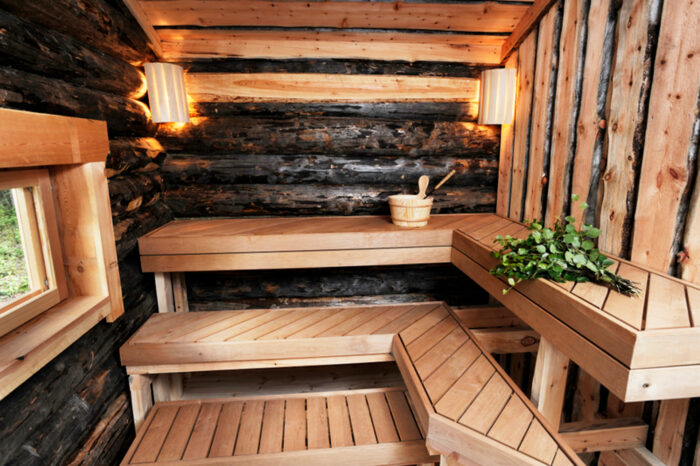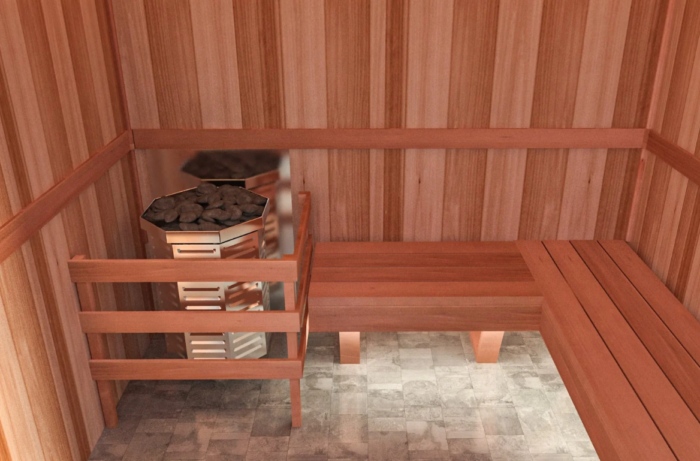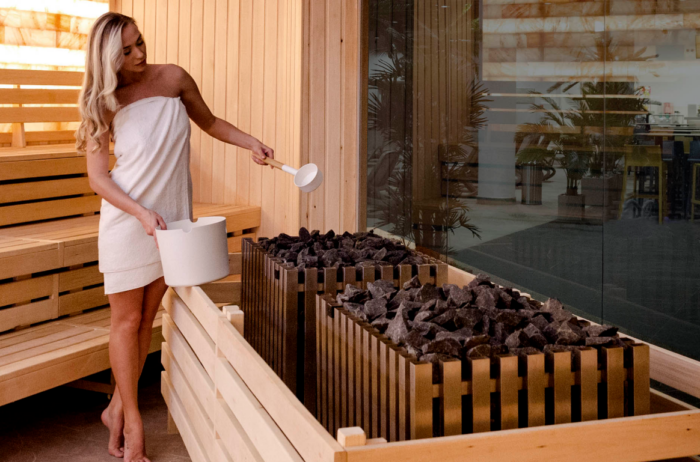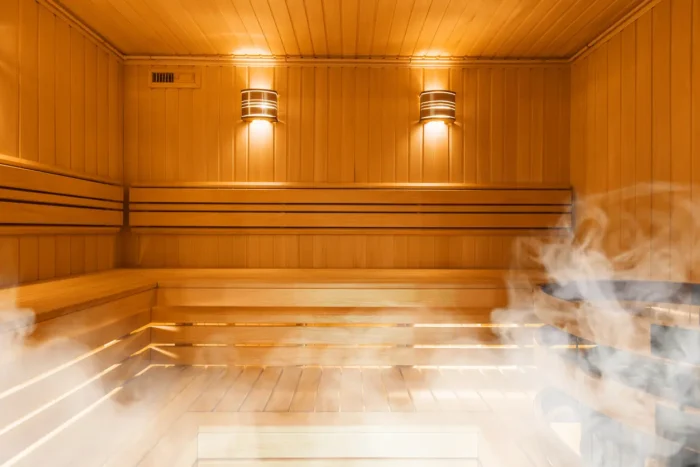Stepping into a sauna offers a world of health benefits, from detoxification to stress relief. But behind that comforting heat lies a complex science. The core of this soothing experience is your choice of a sauna heater. Let’s delve into the various heating options—wood-fired, electric, and others—to see how they impact your sauna sessions.
Table of Contents
Wood-Fired Saunas: The Traditional Choice

Wood-fired saunas offer an authentic experience, unmatched in aroma and atmosphere. The wood-fired sauna heater, filled with logs, generates natural heat that warms the sauna evenly. The temperature control lies in the size and amount of wood used.
The crackling sound of wood and its rustic scent contribute to an immersive experience. This type of sauna connects you with the primal elements of fire and wood, enhancing the therapeutic process.
Additionally, wood-fired saunas bring a touch of nostalgia, evoking the centuries-old tradition of sauna bathing. They’re ideal for those who crave a hands-on, elemental interaction with their wellness rituals.
The ritual of preparing the sauna, lighting the fire, and waiting for the heat to build can be a meditative process in itself, offering a unique way to unwind and disconnect from the modern world.
Electric Saunas: The Modern Convenience
Electric saunas offer a cleaner and more controlled environment. These saunas come with thermostats, allowing you to precisely regulate temperature. Installation is generally more straightforward, only requiring an electrical outlet. However, they lack the natural ambiance that wood-fired saunas provide.
For those seeking convenience and easy maintenance, electric is the way to go. Plus, modern electric units often come with additional features like timers and remote controls, making your sauna experience effortlessly customizable. These saunas are perfect for the modern home where convenience and ease of use are prioritized, offering a fuss-free relaxation experience.
Infrared Saunas: The Health-Centric Option
Infrared saunas differ fundamentally from traditional models. Instead of warming the air, they warm the body directly using infrared lamps. This method is said to enable deeper detoxification and offers a more comfortable environment at lower temperatures. Many users report enhanced benefits such as improved cardiovascular health and deeper tissue penetration.
Furthermore, infrared saunas are usually more energy-efficient and can be installed in smaller spaces, making them ideal for urban dwellers or those with limited room for a sauna. They are a great choice for those who are health-conscious and looking for a sauna experience that is both efficient and beneficial to their well-being.
Gas Saunas: The Quick Heaters

If you’re impatient to get your sauna session started, gas heaters offer quick heating times. These units use propane or natural gas and are often chosen for larger saunas. They provide a soft, moist heat and are considered more economical for frequent users.
However, their installation can be more complicated, often requiring professional help. Gas saunas are also appreciated for their consistent heat distribution, ensuring a uniform sauna experience. Moreover, they are an excellent choice for outdoor installations where electricity may not be readily available.
Gas saunas are a robust solution for those who prioritize efficiency and practicality in their wellness routine. While the initial setup might be more involved, the long-term benefits of rapid heating and cost-effectiveness make them an attractive option.
They are particularly suitable for those who use their sauna regularly and prefer a traditional heating method that complements the authentic sauna experience.
Steam Saunas: The Hydration Boost
Steam saunas, or steam baths, are not true saunas in the traditional sense, but they do offer a unique experience. The steam generator produces moisture, keeping the air humid. This setting is ideal for those looking to hydrate their skin.
Yet, the high humidity can make the environment feel hotter than it actually is, so caution is advised. Steam saunas are especially beneficial for respiratory health, as the moist air can help clear sinuses and alleviate breathing problems.
Unlike traditional dry saunas, steam saunas offer a different kind of therapeutic experience, focusing on skin hydration and respiratory relief. They are perfect for those who might find the dry heat of conventional saunas too intense. Additionally, the steam sauna environment is conducive to aromatherapy, allowing users to infuse essential oils into the steam for an enhanced sensory experience.
This combination of heat and humidity creates a soothing atmosphere that can be particularly relaxing and rejuvenating.
Factors to Consider: Size, Efficiency, and Aesthetics

The choice of a sauna heater should align with your specific needs. If you have a smaller space, electric or infrared options might be more feasible. For larger setups, wood or gas can be more efficient. Also, consider how the heater’s look complements your sauna’s overall aesthetics.
Environmental Impact: Making a Green Choice
Environmental considerations are more critical than ever in our decision-making. When it comes to saunas, electric models can be a sustainable choice, especially if they are powered by renewable energy sources like solar or wind power, thus reducing their environmental footprint.
Wood-fired saunas, when using sustainably sourced wood, can also be an eco-friendlier option. These saunas, when operated responsibly, can have a significantly lower carbon footprint compared to traditional energy sources.
It’s important to always check the energy efficiency ratings when making your choice. Look for saunas that have been designed with energy conservation in mind, such as those with improved insulation or low-energy lighting.
Some modern electric saunas also feature smart technology, allowing for better temperature control and timing, which can further reduce energy usage. Making an environmentally conscious choice not only benefits the planet but also often results in long-term savings for the user.
The Bottom Line: Personal Preferences Rule

At the end of the day, your sauna heater choice will depend on your personal preferences, be it for health benefits, aesthetic qualities, or even nostalgia for a traditional wood-fired sauna. While some may prefer the quick heating and clean operation of an electric sauna, others might value the natural ambiance and aroma of a wood-fired one.
By understanding the science behind each option, you’re better equipped to make an informed decision that maximizes your sauna experience. Consider factors like heating time, temperature control, maintenance requirements, and the overall atmosphere each sauna type offers.
Remember that the right choice is one that aligns with your lifestyle, wellness goals, and environmental values. Whichever option you choose, the key is to create a space that allows for relaxation, rejuvenation, and a step away from the stresses of daily life.

